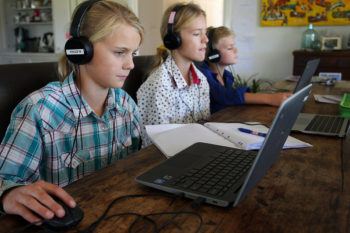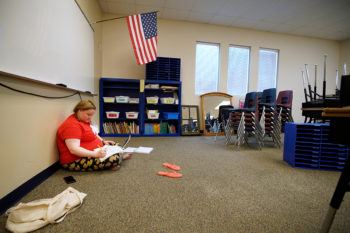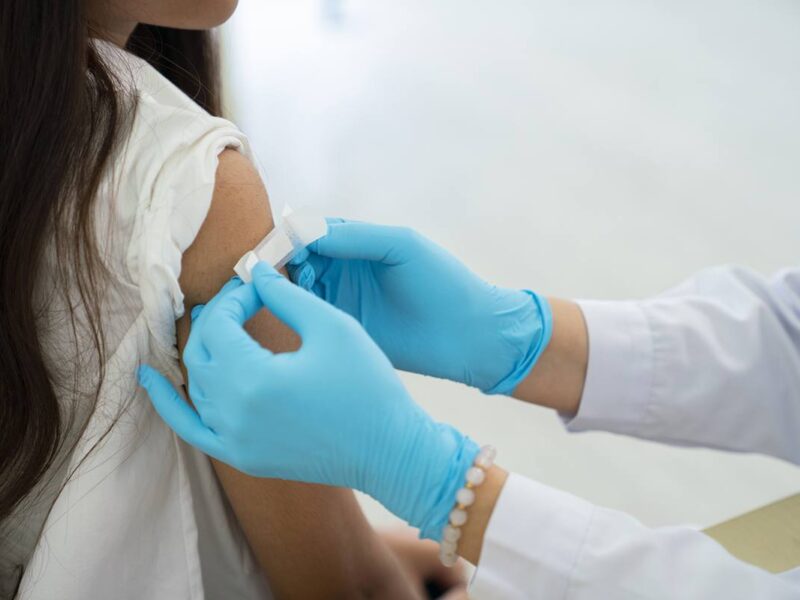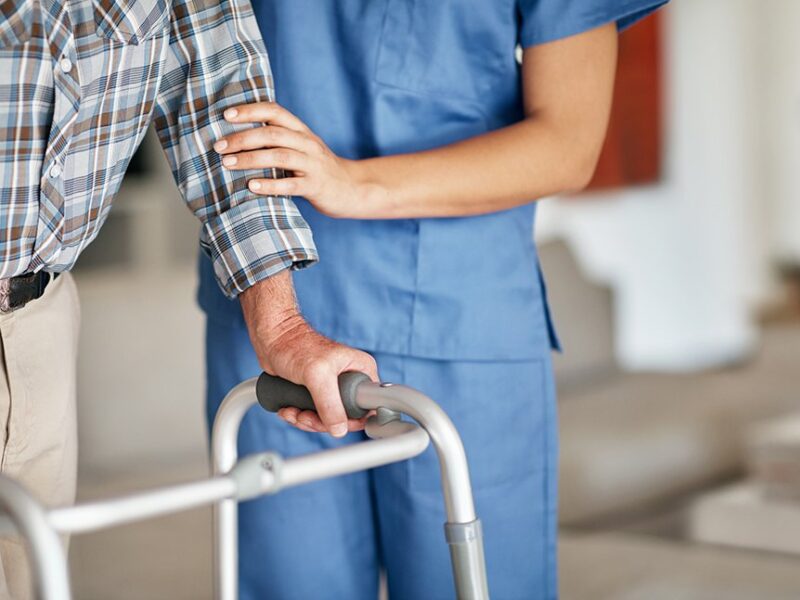Tough Choices For Parents And Teachers As Schools Plan To Reopen

The push for K-12 children to return to school this fall has put many parents, teachers and districts in a difficult position as the nation continues to see cases of COVID-19* rise.
“This is a traumatic and trying time for everyone,” said Claudia Massey, a College Station mother of two middle school students who has chosen to keep her children home for virtual instruction, at least for the fall semester.
“It does not discriminate age,” said Massey, who works in the healthcare field and has seen how the virus can spread through a building. “Ultimately, I do not believe schools are prepared for this kind of challenge.”
Massey considers herself among the fortunate since her husband is working from home and can monitor the online instruction. “It is heartbreaking for families who do not have the option or resources and must send their kids to school regardless,” she said.
For parents and teachers alike, navigating the guidance from local, state and federal public health officials and policy-makers is a roller coaster, said Joanne Olson, Texas A&M University Professor of Science Education in the College of Education and Human Development. Olson, a former elementary and middle school teacher, prepares teachers, conducts research in classrooms and works with teachers to improve their practice.
Some teachers are choosing to quit their jobs instead of risk exposure. “The unfortunate issue here is that our country was very inconsistent in its actions to slow the spread early on, and we are now in a situation where cases are truly alarming,” Olson said.
“The CDC and leading epidemiologists and public health experts have made clear that any gatherings of people in enclosed spaces where air is shared is very risky and will increase the number of people who become ill, and potentially die,” Olson said. “Creating wide-scale reopening policies that apply to all schools is a real problem, because every building is different.”
Some teachers are returning with much trepidation, like Misty Tarver, a 1994 Texas A&M graduate who teaches at a junior high school in Ferris, Texas, a small town outside of Dallas. Her school is following a phased approach, beginning the academic year with about 20 percent in-person, then bringing 50-70 percent of students back by early October.
Tarver said she is concerned about not having enough room for social distancing.
“We are over capacity as it is, and our passing periods are packed,” she said, adding parents regularly send their children to school sick and she fears that won’t change, even if kids are showing symptoms of COVID-19.
“This will increase my risk, my husband’s, my 4-year old’s and my elderly parents’,” Tarver said.
Leaders of several teachers’ unions have openly expressed concern about teachers returning to the classroom, including the American Federation of Teachers (AFT). Its president, Randi Weingarten, said in a speech at the AFT Biennial Convention in late July that the organization may call for a strike if authorities fail to properly protect schools.
The Texas State Teachers Association (TSTA) is petitioning Texas Gov. Greg Abbott to keep schools closed for in-person instruction at least until Sept. 8, reopening only when it is safe to do so.
The Texas Education Agency released guidance for reopening and gave local districts the flexibility to allow parents to choose between in-person and virtual learning. The Centers for Disease Control and Prevention released updated school opening guidelines on July 24 and advocated* in-person learning.
Texas Attorney General Ken Paxton issued guidance saying local health officials can’t close all schools “on a purely preventative basis.” Rather, a school must show that its facilities or people have been contaminated or infected, and then the decision lies with school officials.
With some local, state and federal officials seemingly at odds with one another, it may be difficult to know who to trust.
Shawn Gibbs, dean of the Texas A&M School of Public Health, said it’s important for decisions to be made at the local level and based on the unique needs of each district and its schools.

“The schools will have to adapt their precautions to the physical infrastructure within their buildings, and since there is large variations between school buildings, then to some extent there will have to be variations with how they can implement precautions,” Gibbs said.
He said these precautions will likely include a face covering mandate for teachers and students, social distancing requirements, barrier protection, reduced number of individuals in classrooms and many other engineering and administrative controls.
Gibbs said the ideal situation for reopening schools is one in which there is no virus, but that isn’t likely at this point in time. He said the next best scenario would be one where community spread is under control and declining, which is not the case in districts across the nation.
“We can only reduce the risks associated with the disease transmission.” he said. “We have to try to manage the risks as effectively as possible to reduce the likelihood of spread, but it is likely that there will be cases of COVID-19 within schools.”
With so many parents working full time, schooling from home can be extremely difficult, so it’s important to reach out for help when needed.
The American Association of Pediatrics has released a statement advocating that “policy considerations for the coming school year should start with a goal of having students physically present in school.
“The importance of in-person learning is well-documented, and there is already evidence of the negative impacts on children because of school closures in the spring of 2020,” the statement continues. “Lengthy time away from school and associated interruption of supportive services often results in social isolation, making it difficult for schools to identify and address important learning deficits as well as child and adolescent physical or sexual abuse, substance use, depression and suicidal ideation.”
If COVID-19 cases do arise as a result of in-person attendance, Gibbs said it’s important that parents cooperate with school and health officials.
“Remember to act calmly and to cooperate with those conducting contact tracing so that they can identify any close contacts to determine where the transmission most likely occurred and encourage anyone potentially infected be tested so that we can disrupt further transmissions,” he said.
For parents choosing to keep their children home for online instruction, Olson said that online instruction is quite different than in-school instruction, and that parents need to be realistic about what can happen at home.
“Academic standards are developed by groups of adults and are intended to be taught under normal conditions by knowledgeable teachers,” she said. “Parents should be gentle with themselves and realize that doing what their children’s teachers do for a full school day every day is unrealistic.”
Olson recommends that parents focus on fewer things, and do those things as well as they can.
“In the elementary grades, a focus will be on literacy and mathematics, but make sure kids have time outside to explore and investigate the natural world,” she said. “With older children, this is an excellent time to address social studies issues, since we have so many things happening in the world right now that can help children understand our elections and system of government. Children are understandably nervous, and knowing more about science and history can help them better understand what is going on around them and reduce fears.”
With so many parents working full time, schooling from home can be extremely difficult, Olson said, so it’s important to reach out for help when needed.
“Work closely with your child’s teacher,” she said. “Follow the teacher’s lead, make sure your child has a place to work and carefully monitor what they are doing, supporting your child’s efforts and addressing needs they have. If you are homeschooling for the first time, contact your local homeschooling organization so that you can learn from others’ experience and get tips and support.
“You don’t have to walk this road alone; help and resources are available,” she said.
* This link is no longer active and has been removed.
Media contact: Lesley Henton, lshenton@tamu.edu





